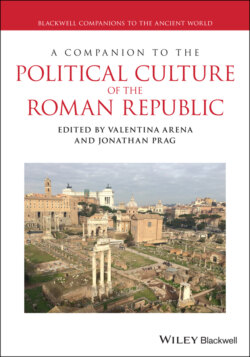Читать книгу A Companion to the Political Culture of the Roman Republic - Группа авторов - Страница 84
FURTHER READING
ОглавлениеThe debate has continued in recent years. Mouritsen 2017 expounds an emphatically oligarchic model, under which the people’s real function in the system was to provide legitimacy for aristocratic rule. This is rejected by Clemente 2018, who argues, inter alia, that Roman politics was about substantial issues, involving rival social interests and opposing political views; popular participation was real and significant, rather than merely symbolic. On populares and optimates in the late Republic, see Robb 2010, contra Yakobson 2017. Hölkeskamp 2017 stresses the cultural and ideological hegemony of the elite, without dismissing the importance of the popular element in the system and the need, for the ruling class, to obtain popular consent. Morstein-Marx 2019 puts greater emphasis on popular autonomy and power. Much attention is paid to public communication, public opinion and the way the former shaped, and gave an expression to, the latter: e.g. Jehne 2000; Steel and van der Blom eds. 2013; Jehne 2014; van der Blom 2016; Rosillo-López 2017; Angius 2018; and Rosillo-López ed. 2019. See also Beck 2005; Benoist ed. 2012, esp. F. Hurlet’s paper (Hurlet 2012); Jehne ed. 1995; Gruen 1996; Gabba 1997; Rosenstein and Morstein-Marx eds. 2006; Tatum 2009; Yakobson 2010; Knopf 2018; and van der Blom et al. eds. 2018.
